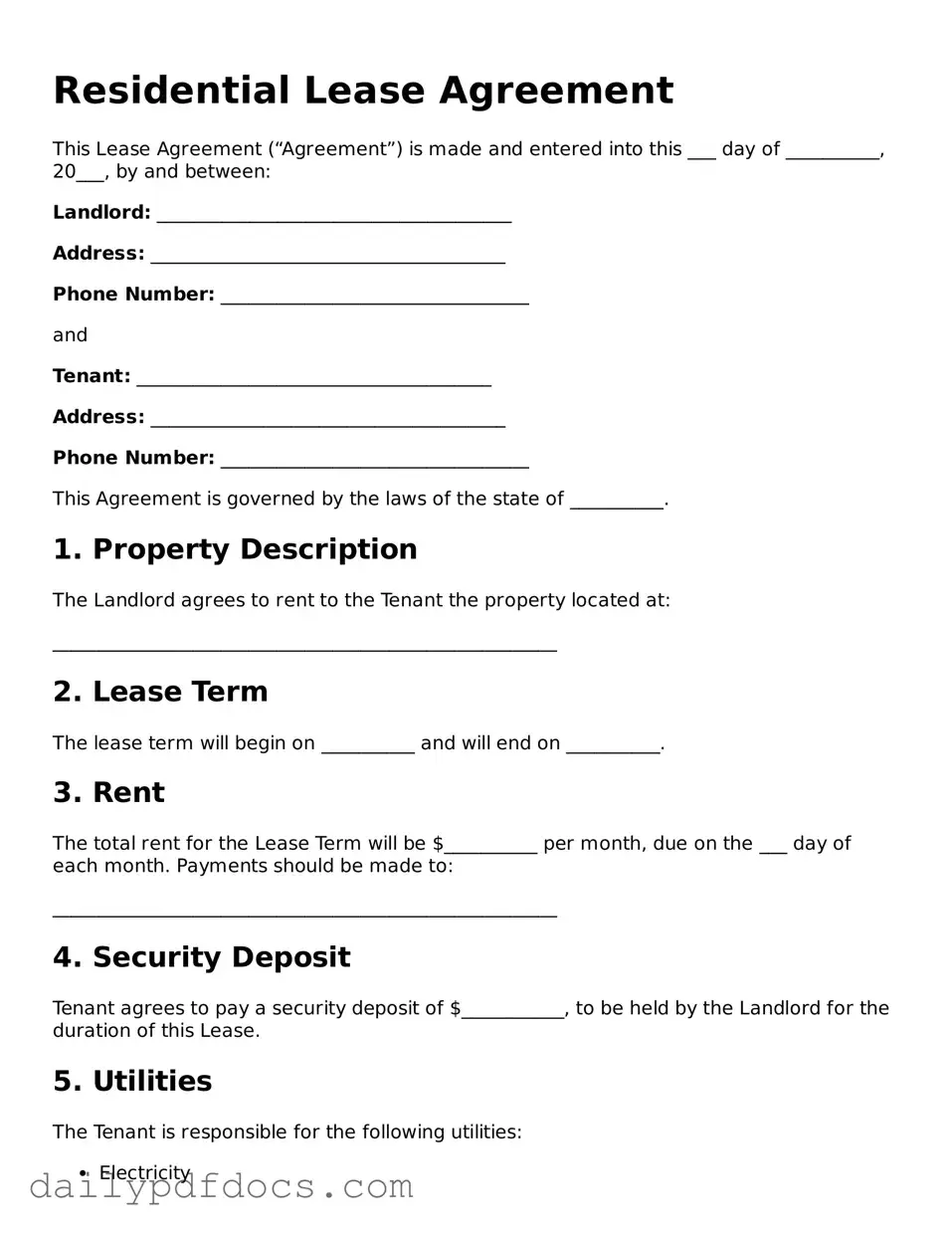Residential Lease Agreement
This Lease Agreement (“Agreement”) is made and entered into this ___ day of __________, 20___, by and between:
Landlord: ______________________________________
Address: ______________________________________
Phone Number: _________________________________
and
Tenant: ______________________________________
Address: ______________________________________
Phone Number: _________________________________
This Agreement is governed by the laws of the state of __________.
1. Property Description
The Landlord agrees to rent to the Tenant the property located at:
______________________________________________________
2. Lease Term
The lease term will begin on __________ and will end on __________.
3. Rent
The total rent for the Lease Term will be $__________ per month, due on the ___ day of each month. Payments should be made to:
______________________________________________________
4. Security Deposit
Tenant agrees to pay a security deposit of $___________, to be held by the Landlord for the duration of this Lease.
5. Utilities
The Tenant is responsible for the following utilities:
- Electricity
- Water
- Gas
- Internet
6. Maintenance
The Tenant shall maintain the property in good condition and notify the Landlord of any necessary repairs.
7. Termination
This Agreement may be terminated by either party with at least ___ days written notice prior to the end of the Lease Term.
8. Governing Law
This Agreement will be governed by and construed in accordance with the laws of the state of __________.
9. Signatures
Both parties agree to the terms of this Lease Agreement by signing below:
Landlord Signature: ___________________________ Date: __________
Tenant Signature: ___________________________ Date: __________
